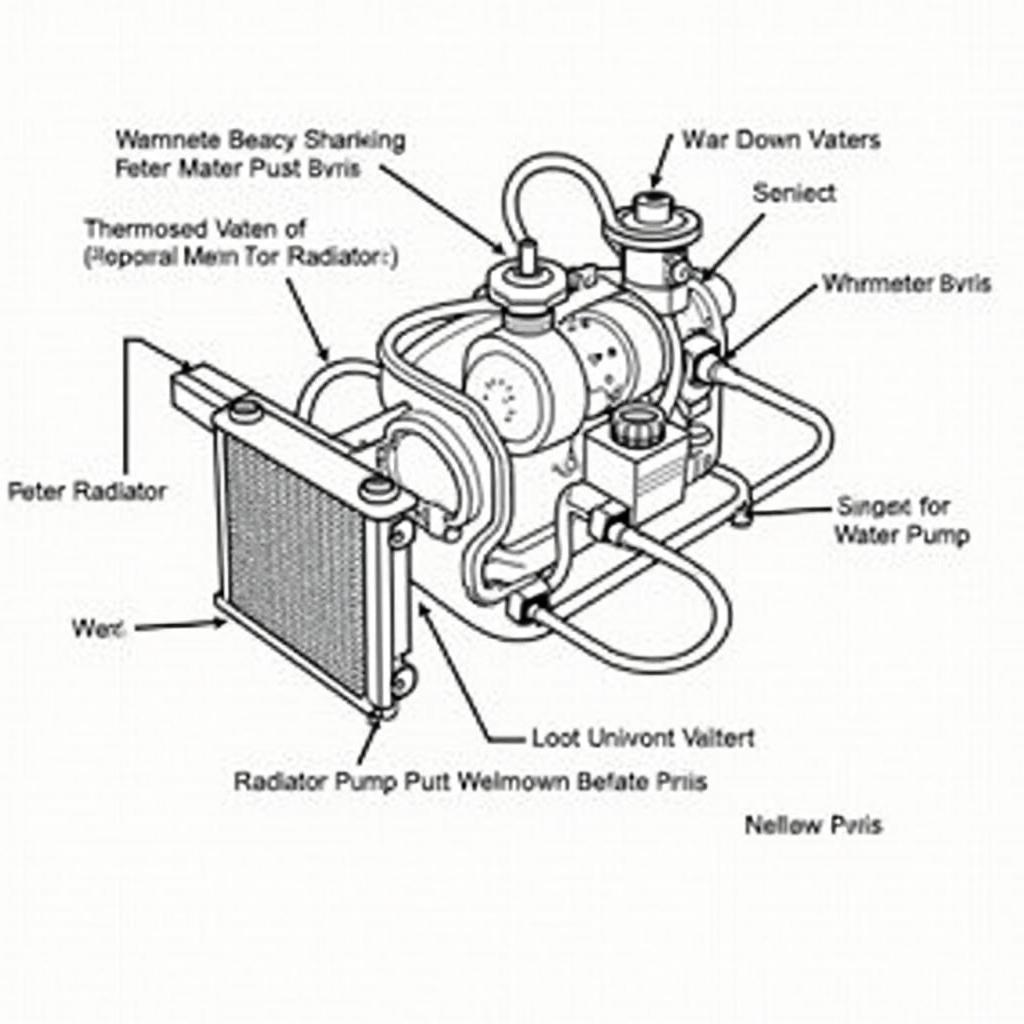Jaguar Car Water Service, or more accurately, coolant service, is a critical aspect of maintaining your luxury vehicle’s performance and longevity. Overlooking this essential maintenance can lead to costly repairs and significantly shorten the lifespan of your engine. This guide will delve into the importance of Jaguar car water service, what’s involved, and how to ensure it’s done correctly.
Why is Jaguar Car Water Service So Important?
The “water” in your Jaguar’s cooling system isn’t just water. It’s a specialized coolant mixture designed to regulate engine temperature, prevent freezing in cold weather, and protect against corrosion. Over time, this coolant degrades, losing its protective properties and becoming less effective at dissipating heat. This can lead to overheating, which can cause serious engine damage.
Preventing Overheating and Engine Damage
Overheating is a leading cause of engine failure, and a properly maintained cooling system is the first line of defense. Regular Jaguar car water service ensures that the coolant is fresh and effective, preventing overheating and protecting vital engine components.
Protecting Against Corrosion
The coolant in your Jaguar also contains additives that protect against corrosion within the cooling system. Corrosion can lead to leaks, blockages, and damage to the water pump and radiator. Regular coolant flushes remove these corrosive elements and replenish the protective additives.
What’s Involved in a Jaguar Car Water Service?
A Jaguar car water service involves more than just topping off the coolant. It’s a comprehensive process that should be performed by a qualified technician. Here’s a breakdown of what’s typically included:
- Coolant Drain and Flush: The old coolant is completely drained from the system, and a flushing agent is used to remove any remaining debris and contaminants.
- System Inspection: The entire cooling system is inspected for leaks, cracks, or any signs of damage. Hoses, clamps, the radiator, and the water pump are all carefully checked.
- Coolant Refill: The system is refilled with the correct type and concentration of Jaguar-approved coolant.
- Pressure Test: A pressure test is performed to ensure there are no leaks and that the system is functioning correctly.
Choosing the Right Coolant for Your Jaguar
Using the correct coolant is crucial for your Jaguar’s performance and longevity. Using the wrong type can lead to corrosion and damage to the cooling system. Always consult your owner’s manual or a qualified Jaguar technician to determine the correct coolant for your specific model.
How Often Should You Service Your Jaguar’s Cooling System?
The recommended service interval for your Jaguar’s cooling system can vary depending on the model and year. However, a general guideline is to have the coolant flushed and replaced every two to three years, or as recommended in your owner’s manual.
Signs Your Jaguar Needs a Coolant Service
- Temperature gauge reading high: This is a clear sign that your cooling system is struggling to regulate the engine temperature.
- Low coolant level: A low coolant level can indicate a leak or other problem within the cooling system.
- Discolored or rusty coolant: If the coolant appears dirty, rusty, or has an unusual odor, it’s time for a flush and replacement.
- Leaks under the car: Coolant leaks can occur from various points in the system, including hoses, the radiator, or the water pump.
Conclusion
Jaguar car water service, or coolant service, is a vital part of keeping your Jaguar running smoothly and preventing costly repairs. By following the recommended service intervals and addressing any signs of trouble promptly, you can ensure the long-term health and performance of your engine. Don’t neglect this essential maintenance—it’s an investment in the longevity of your prized Jaguar.
FAQ
- What type of coolant should I use in my Jaguar? Always consult your owner’s manual or a qualified Jaguar technician for the correct coolant type.
- How often should I have my Jaguar’s coolant flushed? Generally, every two to three years, or as recommended in your owner’s manual.
- What are the signs of a coolant leak? Low coolant levels, puddles under the car, and overheating are common signs.
- Can I top off my coolant myself? Yes, but be sure to use the correct type of coolant and address any underlying issues causing low levels.
- Is it expensive to have a Jaguar coolant service? The cost varies depending on location and service provider, but it’s a relatively affordable preventative maintenance procedure.
- What happens if I don’t service my Jaguar’s cooling system? Neglecting coolant service can lead to overheating, engine damage, and costly repairs.
- Can I use tap water in my Jaguar’s cooling system? No, tap water can contain minerals that can corrode the cooling system. Always use a Jaguar-approved coolant mixture.
Common Jaguar Coolant Service Questions
- My car is overheating, is it a coolant issue? While a coolant leak or low coolant level can cause overheating, other issues like a faulty thermostat or water pump can also be the culprit.
- I see a green puddle under my car, is that coolant? Coolant can be different colors, including green, orange, or pink. If you suspect a leak, have it inspected by a professional.
- How long does a coolant flush take? A typical coolant flush and refill can take anywhere from one to two hours.
Further Reading and Resources
- Check out our article on Jaguar preventative maintenance for a complete guide to keeping your car in top condition.
- Learn more about common Jaguar problems and how to avoid them.
Need help with your Jaguar’s water service? Contact us via WhatsApp: +1(641)206-8880, Email: [email protected]. We have a 24/7 customer support team.


